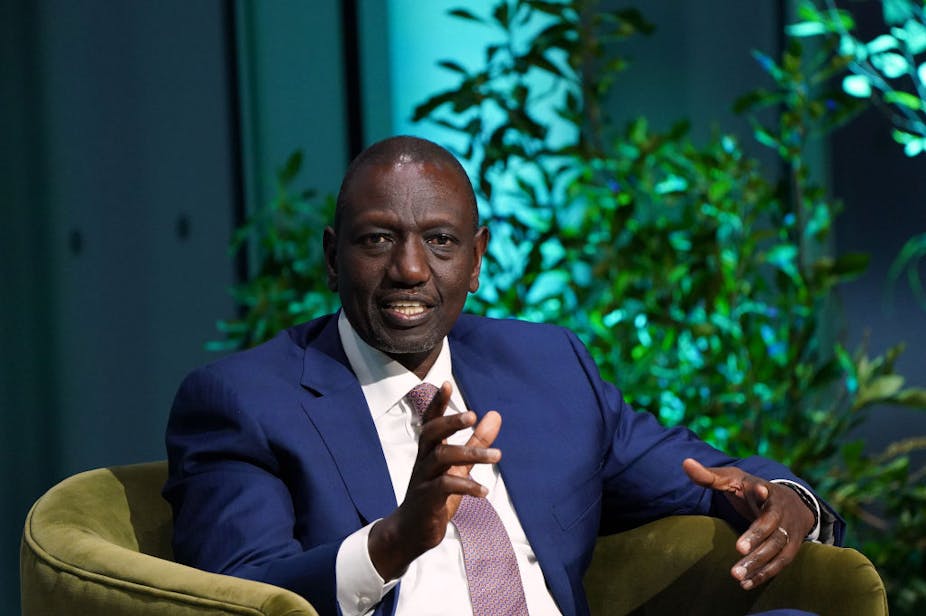Seemingly disillusioned with the country’s leadership, Kenyans have taken to new ways of expressing their anger and frustration with their government.
On social media and in everyday conversations, President William Ruto is now referred to as Zakayo, named after the infamous Zaccheaus, the much-hated chief tax collector in biblical Jericho.
Ruto is also called Kaunda Uongoman, which mimics the stage name of a controversial Congolese musician, Kanda Bongoman. The first name is a reference to Ruto’s recent penchant for Kaunda suits. The surname is a portmanteau of the Kiswahili word uongo, meaning liar, and man.
These nicknames are examples of the many humorous but pointed and pithy descriptions now widely used by Kenyans, particularly on social media platforms, to ridicule and express defiance towards a president and government whose policy decisions have become deeply unpopular.
Satire and humour have always been legitimate sites for popular engagement with the state in Kenya. But a new weapon in the armoury of those criticising the state is the use of memes. Across social media, Kenyans are employing a range of memes drawn from folk, biblical, global and everyday expressions, as well as videos, screen grabs and photographs riffed off circulating news stories to comment on the government’s failings.
Memes have become an important feature of Kenya’s everyday and discursive political practices. Memes are defined by media scholars Laine Nooney and Laura Portwood-Stacer as
digital objects that riff on a given visual, textual or auditory form and are then appropriated, re-coded, and slotted back into the infrastructures they came from.
I have researched these popular cultural forms particularly within the context of digital media in Africa. I have demonstrated, for example, how Twitter has incubated various cultures of popular expression. These create important “pockets of indiscipline” through which state power is constantly challenged.
Media repression in Kenya has taken new forms. The focus is largely on invisible tactics that don’t make the state look bad. These range from the use of advertising blackmail to legal instruments often vaguely defined to facilitate misuse. There’s also the creation of a pliant “independent” media council which is partly funded by the government.
Memes aren’t completely insulating users from potential state harassment and legal transgressions. Nevertheless, they are making it possible for Kenyans to expand their spaces and boundaries of popular expression, and to navigate some of the existing legal barriers to free expression.
Resistance legacy in Kenya
Satire and humour have historically been important forms of political practice in Kenya. The tradition has existed in different forms across various platforms, including broadcast and print media, as well as in popular cultural forms such as music and drama.
For example, in the 1980s and 1990s a satirical newspaper fiction column, Wahome Mutahi’s column Whispers, became a must-read. Through satirical and humorous accounts of a fictionalised Kenyan family, Mutahi was able to openly criticise the government, commenting on state policies and failings in a way that mainstream press couldn’t.
This was at the height of the terrifying reign of the late Kenyan president Daniel arap Moi, when criticism of the government was dangerous. Journalists were routinely jailed, exiled or even killed for it.
Kenyans are again tapping into this history using new media technologies to creatively challenge power.
The political context in the country is different from that of the 1980s. Nevertheless, the government continues to exert influence on mainstream media. Its main means of doing so is through the control of advertising revenue. The state is the largest single advertiser in the country’s media, and organisations regarded as hostile are denied government advertising.
As a result, social media platforms have become alternative critical debating spaces. This is despite efforts by the state to undermine free speech in various communication platforms.
As rights group Article 19 has argued, content-based restrictions on free expression that are incompatible with international human rights law and standards remain in Kenya’s penal code. Another problematic law is the Computer Misuse and Cybercrimes Act, which the government has routinely used to punish those on social media exposing instances of state corruption. Bloggers and political activists have been subjected to some of these laws.
Game of cat and mouse
In an environment where the government seems determined to control public communication spaces, and has the means to do so, alternative cultures of defiance that have been known to elude state capture should thrive.
Yet, even as the use of memes, especially for political accountability, proliferates, there is always the fear that the state can simply ignore their spread and “vitality”, or appropriate them. This would weaken their subversive intent. For example, during a recent foreign trip to Japan, Ruto “accepted” his nickname Zakayo, insisting that he wouldn’t backtrack on his unpopular tax policies.
When the state takes “ownership” of this language of resistance, it presents an interesting paradox, one which the Cameroonian scholar Achille Mbembe once likened to a form of “mutual zombification”. This is where the ruler and the ruled “rob each other of their vitality, leaving both impotent”.
In other words, none is left the stronger.

